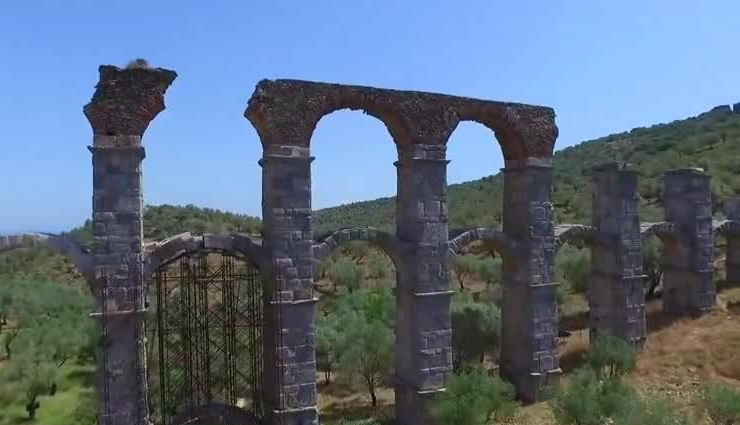6 Most Beautiful Old Aqueducts
By: Kratika Wed, 02 Mar 2022 9:45:34

Aqueducts were built to bring a constant flow of water from distant sources into cities and towns, supplying public baths, fountains and private households. Many aqueducts over land connect points of similar height in a landscape, usually by bridging a river valley or other eroded opening in an otherwise flat area. This list describes the old aqueducts that were built in the period since the 1st century (Roman times) till the 19th century.

# Aqueduct of Segovia, Spain
The Aqueduct of Segovia is a Roman aqueduct and one of the most significant and best-preserved ancient monuments left on the Iberian Peninsula. It is located in Spain and is the foremost symbol of Segovia, as evidenced by its presence on the city's coat of arms. This aqueduct was built in the first century AD. The first section of the aqueduct contains 36 semi-circular arches, rebuilt in the 15th century to restore a portion destroyed by the Moors in 1072. The line of arches is organized in two levels, decorated simply, in which predominantly simple moulds hold the frame and provide support to the structure.

# Aqueduct of Santiago de Querétaro, Mexico
The most prominent feature of Santiago de Querétaro is its enormous aqueduct, consisting of seventy five arches, each twenty meters wide with a total extension of 1,280 meters (0.8 mi) and an average height of twenty three meters (75 ft). It was built by the Marquis Juan Antonio de la Urrutia y Arana between 1726 and 1738 at the request of the nuns of the Santa Clara Convent to bring water to the residents of the city from La Cañada.

# Pont du Gard, France
The Pont du Gard is an ancient Roman aqueduct bridge that crosses the Gardon River in the Gard département of southern France. Built in the 1st century AD, the Pont du Gard is the highest of all Roman aqueduct bridges and is the best preserved after the Aqueduct of Segovia. It was added to UNESCO's list of World Heritage Sites in 1985 because of its historical importance.

# Eagle Aqueduct, Spain
Eagle aqueduct is located in the municipality of Nerja, in southern Spain. This aqueduct was built between 1879-1880 to transport water between a spring on one side of the valley and a sugar mill on the other. The aqueduct still carries water, although the mill has closed.

# Aqueduct of Vanvitelli, Italy
The Aqueduct of Vanvitelli or Caroline Aqueduct is an aqueduct built to supply with water the Royal Palace of Caserta and the San Leucio complex (southern Italy). Commissioned by Charles of Bourbon and designed by Luigi Vanvitelli, its construction began in March 1753 and concluded with its opening on 7 May 1762.

# Pegões Aqueduct, Portugal
Pegões Aqueduct is situated 2 km (1.2 mi) outside the town of Tomar, in central Portugal. The aqueduct was constructed between 1593 and 1613 by order of King Felipe I of Portugal. The monumental structure, which has 180 arches, stretches over 6 kilometers (3.7 mi). The aqueduct was constructed to feed the Convent of Christ in Tomar with water. As the aqueduct nears the Convent of Christ it is more decorative with four foot high stone (1,2 m or 4 ft) carved columns every couple of meters. It is amazing that the water still flowing through the channel of this aqueduct, although the building is 400 years old.





